 |
| ...and don't it feel good? |
“This appears to be quite a predicament, Mario. Data analysis verifies that the island's inhabitants are indeed troubled by pollution, but the pollution itself is not the main problem.
Mario, you witnessed this object at the Airstrip, correct? It is a Shine Sprite. Shine Sprites are the source of power on Isle Delfino. They used to gather in great numbers at the Shine Gate, but the graffiti incident has polluted the island and most of the Shine Sprites have fled. There is no longer any power to support the peaceful lifestyle of the islanders. It is most pitiable. The only way to ensure the return of the Shine Sprites is to keep the island from becoming any dirtier.
The perpetrator is likely at work even as we speak. And you, Mario, are being treated as a criminal. Tomorrow we must do our best to resolve this situation.”
- F.L.U.D.D
The Facts
Release Date: July 19, 2002 (Japan) August 26, 2002 (North America)
Original Platform: Nintendo GameCube
Director: Yoshiaki Koizumi, Kenta Usui
Producer: Shigeru Miyamoto, Takashi Tezuka
Also Playable On: Nintendo Switch
 |
| Cleanup on Isle Delfino! |
What's the Deal
Mario, Princess Peach, and some Toads (including Toadsworth, whoever
that is) are heading to the tropical island of Isle Delfino for a
vacation. However, upon arriving at the island, they see that the
Airstrip is covered in weird, moving, magical paint. Mario finds a
robotic water pump backpack called the “Flash Liquidizer
Ultra-Dousing Device” (F.L.U.D.D), and cleans off the
Airstrip...only to get arrested for defacing the island with graffiti
and causing the island's guardians, the Shine Sprites, to leave,
plunging Isle Delfino into darkness.
Eyewitnesses claim that Mario is responsible for the pollution, and our hero is sentenced to community service. Mario and F.L.U.D.D must now work together to clean up the island, recover the Shine Sprites, and clear Mario's name by capturing the impostor that framed him!
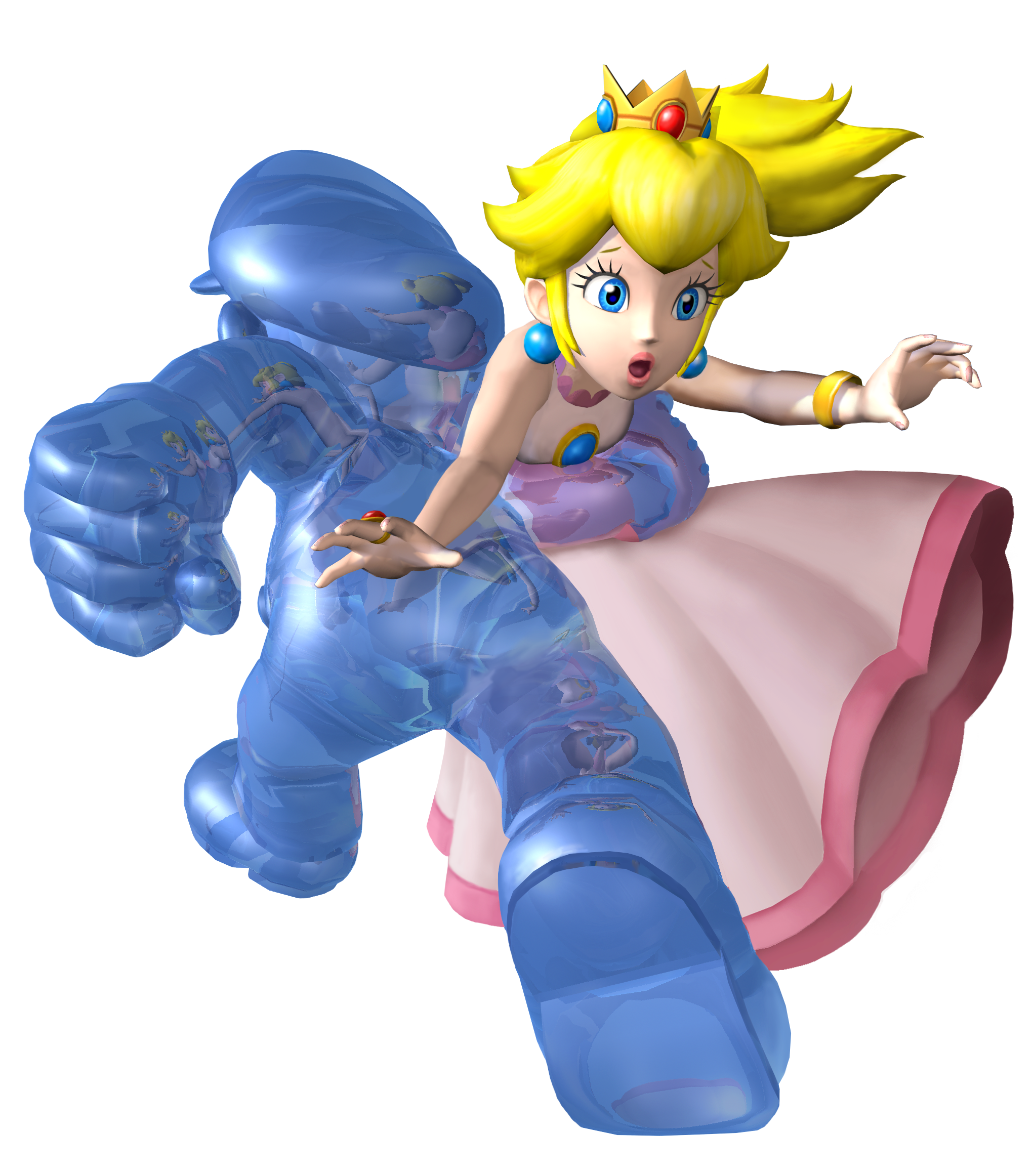 |
| As usual, image source is mariowiki.com, unless otherwise noted |
Background/Development
As early as 1997, Shigeru Miyamoto mentioned working on a sequel to Super Mario 64.
At Nintendo's Spaceworld 2000 trade show, a tech demo for Nintendo's next console, the Nintendo GameCube, was premiered, called Super Mario 128.
The demo was running on a GameCube in real time, and featured 128 Marios walking around on a large disc-shaped platform, and doing things like picking up boxes and greeting the viewer, while various effects happened, such as the platform moving, changing shape, and even transforming into a giant pizza!

"It's-a me!" "And-a me!" "And-a me!" "And..." However, Miyamoto has said that this event was never intended to represent the next Super Mario game. It was more so a testing ground for concepts for other projects. Most of SM128 became the GameCube launch title Pikmin, presumably in how large groups of characters were handled. Other concepts, like “gravity-defying” were used for the Magnetic Boots in The Legend of Zelda: Twilight Princess, and the “sphere-walking” became a cornerstone of Super Mario Galaxy (which we'll get to soon, I hope).
That said, the name Super Mario 128 WAS used to refer to a SM64 sequel in secret development at Nintendo that began as a way to get more out of the Nintendo 64 hardware (apparently Super Mario 64 utilized only about 60% of the N64's potential).
SM128 was originally designed with the Nintendo 64 Disc Drive in mind, but due to the N64DD's commercial failure in Japan, it was moved to GameCube. All that's known of this version of the game is that it featured both Mario and Luigi playable via split-screen, with rumors of Peach and Toad also being playable.
In 1999, Miyamoto expressed disappointment that the Super Mario series was seen as too childish, believing that gamers would grow out of it by the time they reached middle school (joke's on him; middle school was when I got back into Super Mario after falling out of it), wanting Mario to have a more “grown-up” vibe about him, less smiling and laughing for no reason, and to stop using the V-sign hand gesture that had become his trademark starting with Super Mario World.
That philosophy is present in Sunshine, which as a more involved plot for the game than anything we've seen before, Mario being a lot less prone to “Wahoo”s, “Here we go”s and the like.
The V-sign gesture didn't show up in a mainline Super Mario game until Super Mario Odyssey, in 2017, eighteen years after Miyamoto's statement.
And man, was I happy to see it!
Director Yoshiaki Koizumi came up with the idea of using the GameCube controller to control a water pump for the main gameplay gimmick for the next Super Mario game.
Among the ideas considered were an actual water gun (which they ditched because the other director, Kenta Usui, felt it might've been controversial in America), as well as, bizarrely, a Yoshi on Mario's head that spits water. The final design of F.L.U.D.D wasn't the favorite of anyone on the team, but I guess it was the one that made the most sense.
Ten different nozzles for F.L.U.D.D were considered, but only four appear in the game, with the “Hover” nozzle intended to be the final one before deciding to have it be the first one instead.
Koizumi envisioned the game as taking place in a “detailed townscape”, while Usui drew sketches of a “villa on a plateau” and a “port town”.
Usui wanted to design the setting with a specification sheet on a computer, but Koizumi made a model of Isle Delfino out of clay.
According to Yoshiaki Koizumi, the game was originally designed around disaster recovery, with the collection of Shine Sprites being less of a priority.
A railway system was intended for the game but ultimately not included, there's a few unused enemies (such as Hinokuri, a fully-functional boss that was in early demos of the game, but not in the final and “Kug”, a giant, paper-thin Goomba?), plus some unused dialogue suggests that the object of the game would've been to improve Isle Delfino's tourism rating.
An early screencap has a human girl visible in the background of Delfino Plaza, but all human-type characters (save for Mario and Peach) were removed.
.png/1600px-SMS_-_Piantas_(shadowless).png) |
| I feel like if I lived in Mario's world, I'd be a Pianta. I think I just have that kinda vibe. |
My History With It
Back in August 2001, TheMushroomKingdom.net reported news about an upcoming title for the soon-to-be-released Nintendo GameCube known as Mario Sunshine (no “Super”, I'm noticing, which apparently wasn't added until later?), and everyone noticed the backpack Mario was wearing.
Between Luigi's Poltergust 3000 in Luigi's Mansion, and F.L.U.D.D here, a lot of people were wondering if the theme for this console generation was going to be Nintendo characters wearing backpacks.
Seriously, there was quite a bit of discussion (almost controversy) about it.
Around this time, as mentioned earlier, I'd fallen out of Super Mario, and most gaming in general, so the release of the game in late August 2002 passed me by.
There was a “Nintendo SuperStars” kids' meal promotion at Burger King that year, and it featured toys based on The Legend of Zelda: Ocarina of Time, Donkey Kong 64, Kirby 64, with the rest being themed around Super Mario: a game featuring Wario, toys of Luigi, Yoshi, Peach/Bowser, and (most relevant to this) a Coin Collector Mario Sunshine, which is something I own. I don't remember getting it myself, but I think it was something given to me by my brothers years later.
After buying Mario Tennis for N64 from a Blockbuster store in 2003, I jumped (pun intended) right back into my Super Mario fandom, and that year for Christmas, my brothers and I got a GameCube with five games: Super Smash Bros. Melee, Star Fox Adventures, Luigi's Mansion, Pikmin, and...Super Mario Sunshine.
However, we didn't have a GameCube Memory Card for almost a year, I believe. So, I never got very far in most of these games. But I was able to quote the opening cutscene for Sunshine word for word, since I'd seen it so many times.
I also got a puzzle depicting art of Mario, Princess Peach, Toadsworth, and F.L.U.D.D relaxing on Gelato Beach.
It wasn't until my sophomore year of high school when I decided that this game was a hole in my Super Mario career that needed to be filled (and I'd already beaten Luigi's Mansion), so I started playing through it. I wanna say I finally finished the game in April of '06 (maybe. Might've been in fall of '05? Can't remember)
I remember playing the game as I waited for my grandmother to wake up and fall for my prank on April Fool's day (I switched out her coffee can for flour. I wasn't very creative). Had to be '06, then. I don't think I had access to the GameCube in Spring of '05.
I never really messed with it much after that. It was the only 3D Super Mario I never attempted to 100%. My memories of that playthrough were mostly “quite good, but I didn't love it. Definitely my least favorite Super Mario”.
In 2013 or so, I remember one of my friends getting annoyed by how every time I mentioned Sunshine, I'd preface it with “It's not a bad game, but...”
Clearly, he liked it more than I.
Around that same time, I decided to try another playthrough, but I didn't get very far.
In 2020, Super Mario 3D All-Stars was released for Nintendo Switch, giving me an excuse to fully replay the game for the first time since high school. And so I did.
Of the three games included, I wanna say that Sunshine took me the longest to get through, and my opinion on it hadn't changed much.
Maybe third time's the charm, eh?
What was I playing before this?
I'm adding a new section here, where I list the games I was playing between entries of this blog.
Grim Fandango Remastered, F-ZERO 99, Mortal Kombat 1, Super Mario Bros. Wonder (I'll get to that one someday...)
Playthrough
Played On: Nintendo Switch, via Super Mario 3D All-Stars
Apparently, the plane our heroes are on is called the “Toad Express”, according to the official strategy guide.
Some small crumbs of characterization here, like Princess Peach being the only one to notice Shadow Mario jumping around in the video, or Mario getting distracted by fantasizing about seafood.

Shouldn't they have brought Luigi along? If anyone deserves a vacation, it's him, for having to face his fears and clear out a haunted mansion.
Who is Toadsworth? The game treats him like he's someone we already know, when...he's making his debut here.
He seems to be a standard old man steward to royalty...but I do admit I like how when talking to him later in the game, the voice clip that plays over his dialogue text is “YADABLABLABLABLAH!”, which never fails to amuse me.
Accompanying Mario, Princess Peach, and Toadsworth are five Toads of different colors. It's not been officially stated, but I've always assumed this group becomes the Toad Brigade starting in Super Mario Galaxy. The colors match up.
So, it could be argued that Sunshine is technically the debut appearance of Captain Toad.
One of the first things I noticed as a big fan of SM64 was how much more story-heavy this game is. We have a legit opening cutscene, then a prologue, and another cutscene (where Mario is arrested, put on trial, and gets to spend a night in jail) before the game starts proper, with lots of characters to talk to on the way, as well as full voice-acting in the cutscenes.
Mario's trial goes horribly for him, with his lawyer (Princess Peach) not even able to get an objection in against the prosecutor.
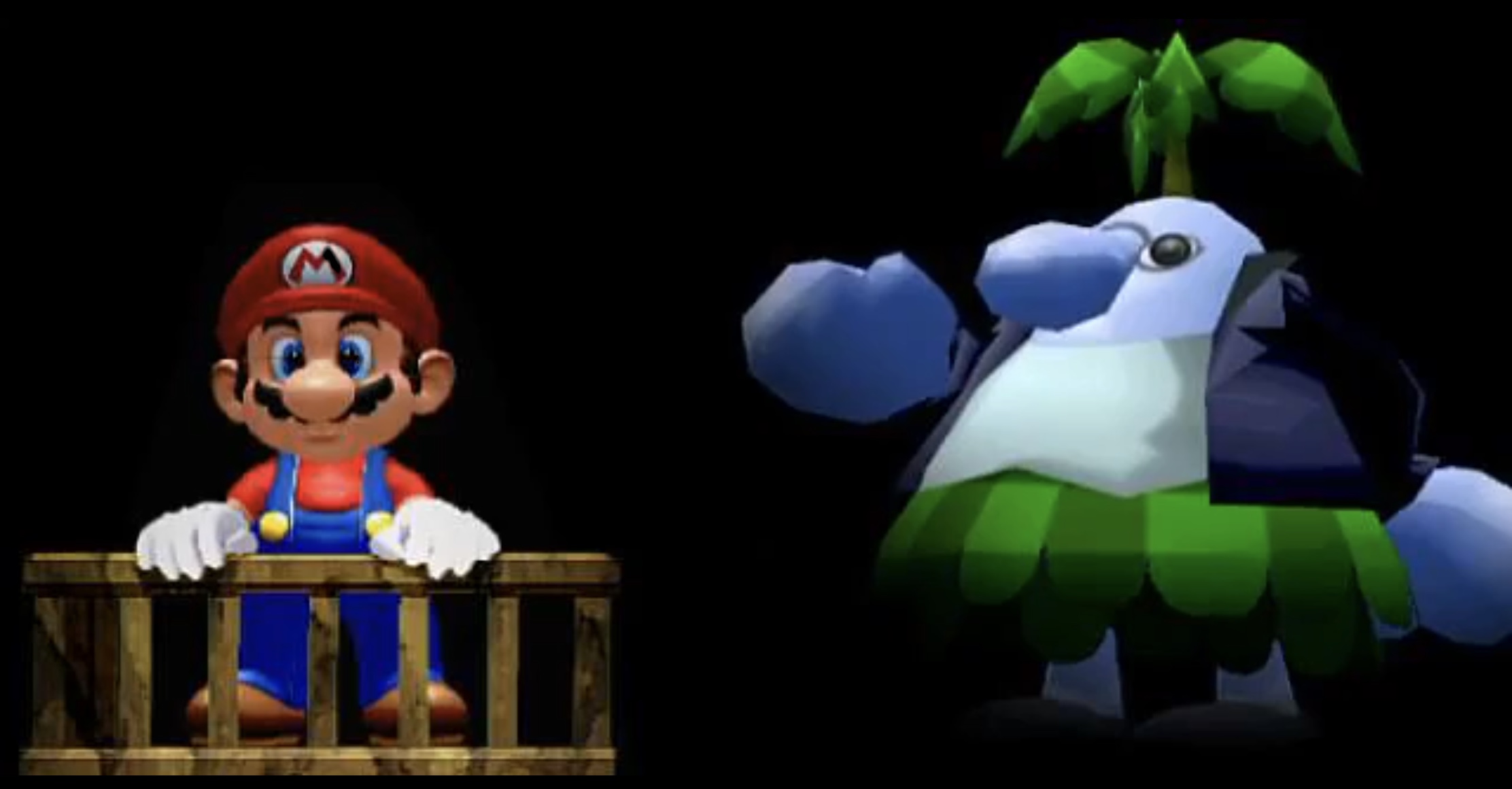
Where's Phoenix Wright when you need him? I've heard it suggested that the missing Shine Sprites are making the residents of Isle Delfino desperate, since their very way of life is being threatened...and that's why they're so eager to punish Mario, because they have no other solution than to imprison and sentence the guy who kinda looks like the dude polluting the island and stealing the Shines.
As a kid, my brother pointed out that the beginning of this game feels like watching an episode of a cartoon instead of playing a Super Mario game.
Delfino Plaza is the best “hub world” of any 3D Super Mario. It's totally believable as a community, has fun secrets hidden here and there, and is fun to just run around in. I really enjoyed talking to some of the NPCs in the Plaza throughout the game, such as the two Piantas arguing about everything, the tourists from Pianta Village, or the dude stuck on a deserted island.
F.L.U.D.D's two main nozzles, “Squirt” and “Hover” are pretty self-explanatory. There's also the “Rocket” nozzle, which allows F.L.U.D.D to launch Mario way up into the air, and the “Turbo” nozzle, which fires behind Mario, sending him running at incredible speed.
There's a Pianta who, after Mario obtains 30 Shine Sprites, will give our hero a pair of cool sunglasses that darkens the screen slightly.
The visual effect of Mario entering a portal painted by Shadow Mario is really neat-lookin'. He gets, like, “bubblized” and the bubbles go into the graffiti.
What Mario says as he enters always amuses me, though. Because it's not a a triumphant “let's-a go!” or something. It's often a more casual “Okey-dokey.”
Early on, Princess Peach gets captured by Shadow Mario, and the player has to chase him through the Plaza, spraying him with F.L.U.D.D until he drops her and escapes, leaving an adorably frustrated princess, who's deduced that he's the one that framed Mario.
Bianco Hills
It's a charming level to open with. There's a lake, a village where every house is topped with a windmill, and no bottomless pits. It's a good way to let the player get used to the controls and mechanics in an actual course.
The second Episode here introduces the player to Petey Piranha! He's a giant, bipedal Piranha Plant with petals on his head and wearing polka-dot briefs.
The cutscene before the battle is amusing. Petey roars so loud it cracks the rooftop he and Mario are standing on, causing them both to look around nervously before slowly raising their heads to look at each other before the roof caves in, dropping them both down inside the windmill for the boss battle.
The battle itself is pretty straightforward. Petey goes to vomit paint at Mario, but Mario has to use F.L.U.D.D to spray Petey's mouth with water until his stomach fills up and he falls over...allowing Mario to Ground Pound Petey's stomach.
After this game, the character kept showing up in spin-off titles, mostly sports games and RPGs (as well as two appearances in the Super Smash Bros. series). Felt like they were really trying to make “fetch” happen, so to speak.
Not a complaint, mind you. I've always liked Petey Piranha. I think he's funny, with a weird appearance, and an oddly laid-back personality.
Episode 3, “The Hillside Cave Secret” is the first of this game's “secret areas”, where Mario has to undergo a challenging platforming gauntlet without F.L.U.D.D (because Shadow Mario takes it away from him at the start).
I'm of mixed opinions about these Episodes. On one hand, they can get incredibly difficult (I've spent close to an hour on a few of 'em later on)...but the fact that they're pure platforming, with no combat, side missions, or even F.L.U.D.D makes them a really fun challenge and probably my favorite part of the game.
Also, I really appreciate the a capella version of the Super Mario Bros. Ground Theme that plays during these levels, even if I have to mute it sometimes after being stuck in one of these for an extended period of time.
During my previous playthrough (on 3D All-Stars), in “The Secret of the Dirty Lake”, debug cubes could be seen, marking the paths of the moving platforms. Shortly afterwards, an update patched them out.
There's a Red Coin hunt, a rematch with Petey Piranha, and another “secret” platforming gauntlet before reaching the Episode where the player has to chase down Shadow Mario.
Ricco Harbor
First thing to notice is that the music for this level is the main theme for the game...but done as a ska track. It's awesome. Honestly, it might be my favorite song in the game.

I scoff at your scaffolding. That's right. It's a scoffolding!
I appreciated the ability to climb onto metal grates and flip over panels as well as attacking enemies on the other side by punching the grate. A nice callback to Super Mario World.
Ricco Harbor is the first time Bloopers are seen in a 3D Super Mario, since they weren't in 64.
In fact, it's their first appearance in a mainline Super Mario game since SMB3 back in 1990 (1988 in Japan)!
The boss of this level is a giant Blooper with ink on its face named “Gooper Blooper”.
I remember finding the idea of ripping off Gooper Blooper's tentacles then pulling on its mouth as it writhes in pain to be surprisingly gruesome for a Super Mario game.
Though the fact that its defeated by Mario pulling on its mouth so far that when he lets go, it smacks into Gooper Blooper hard enough to stun it...that's kinda funny.
The third Episode of Ricco Harbor, “The Caged Shine Sprite” is where I started to notice that this game's controls aren't as tight as SM64. I fell off of the narrow scaffolding several times.
As a huge Beatles fan, I appreciated the yellow submarine in the harbor.
The bio for the official Italian Super Mario Twitter account had Ricco Harbor listed as its location.
Episode 4, “The Secret of Ricco Tower”, later appears as “Twisty Trials Galaxy” in Super Mario Galaxy 2, eight years later.
“Blooper-Surfing Safari” and “Red Coins on the Water” were both infuriating on my last playthrough because of how imprecise the controls are for surfing on a Blooper, and how hitting any obstacle is an instant-death.
Especially the latter mission, because you have to collect the Shine Sprite on land while still riding the Blooper.
Gelato Beach
Of course a game set on a tropical isle is gonna have one or two beach levels.
There's a neat gimmick here with the Dune Buds: spray the plants with water, and a huge sand castle-esque structure suddenly erupts from the ground.

This beach runs itself. I have it set to Gelatomatic. This is where Cataquacks make their debut.
They can be annoying with how they will launch Mario into the air (especially the red ones, since they do damage), but...I can't bring myself to hate 'em. Not sure why.
Three of the Shines in this level involve the incubation of the egg of the Sand Bird.
Episode 2 involves knocking off the Plungelos that are walking across the mirrors reflecting light onto the egg, also knocking off the giant Wiggler that's resting on it.
Episode 3 doesn't involve the Sand Bird directly, but is a boss battle against the Wiggler from the previous mission.
Episode 4 is infamous. Mario has to enter the tower where the egg was previously located, and is required to ride atop the now-hatched Sand Bird as it flies around a tall tower in the sky, collecting eight Red Coins.
It's infamous because of its difficulty. This was another Episode that I likely spent over an hour on. The Sand Bird turns over in mid-air every so often, requiring Mario to have to hurry over to the side so he doesn't fall off. The narrow ledge where he has to stand makes it very hard, not helped by the slippery controls overall. If you fall off, maybe you'll get lucky and manage to land on a cloud...and thus have to wait a few minutes for the Sand Bird to complete its route around the tower and comes back to where you are.
Very tedious and frustratingly difficult.
“Il Piantissimo's Sand Sprint” is the first footrace against Il Piantissimo, a cocky man in a Pianta costume. I think Il Piantissimo is an amusing character in how arrogant he is, the fact his name essentially translates to “The Most Pianta” (despite being a human in an unconvincing disguise), and the fact that actual Piantas find his costume offensive.
He serves a similar role to that of Koopa the Quick from the previous game, but with a lot more character and maneuverability (since he can perform all of Mario's acrobatics).
“Red Coins in the Coral Reef” gave me some trouble, since I searched the whole reef three times before I found where the last Coin was hidden.
Pinna Park
Shadow Mario has kidnapped Princess Peach and has taken her to the amusement park on a nearby island! How does Mario get there? By being shot out of a cannon.
I guess it's because I was expecting it to go like it did in the previous game, but I laughed out loud the first time I shot Mario out of a cannon in Sunshine. It's a lot more sudden, the cannon firing with a large explosion, and Mario screaming as he shoots out of it too fast to even see, a trail of black smoke being the only visual indicator. It's hilarious.
Pinna Park is well-enough designed that it brought back vivid memories of going to water parks as a kid. There's just something about the design of the architecture and water that really sells it for me.
Episode 1 has Shadow Mario operating a large robot of Mario's arch-enemy, named “Mecha-Bowser”, the first mention of the Koopa King in the game so far.
The boss battle of firing water rockets from F.L.U.D.D at Mecha-Bowser while riding a roller coaster and dodging Bullet Bills is neat.
Of course, the big deal here is that after the fight, Shadow Mario reveals that he is...Bowser Jr., the previously-unseen son of Bowser!
This seemingly retcons away the idea that the Koopalings are Bowser's children, which wasn't confirmed until 2012.
Junior has apparently been informed that Mario is “a bully. He never fights fair,” and that Princess Peach is his “Mama”.
He mentions that his Magic Paintbrush was given to him by “a strange old man in a white coat”, which catches F.L.U.D.D's attention, implying that the brush, like F.L.U.D.D, was invented by Prof. Elvin Gadd, from Luigi's Mansion.
I've also always assumed that the magic bandana that Junior wears over his mouth to turn him into Shadow Mario was also invented by E. Gadd, but I don't think it's likely, thinking about it now, especially with the Prima Strategy Guide stating that Junior was already in disguise when Gadd gave him the brush.
And while it's obvious that the bandana magically transforms Junior into Shadow Mario...I think it's funnier to imagine that there's no transformation at all, and that wearing a mustache mask over half his face is enough to fool everyone.
After this revelation, Bowser Jr. takes Princess Peach to Corona Mountain.
“The Beach Cannon's Secret” platforming gauntlet has a background inspired by Super Mario World 2: Yoshi's Island. Neat!
“The Runaway Ferris Wheel” was a bit frustrating, due to the way Mario has to navigate the metal grates behind the ride, and flipping over platforms that flip back over after a few seconds. There was a lot of falling to the ground.
“The Yoshi-Go-Round's Secret” was pretty neat in how Mario has to hatch a Yoshi egg, then ride the newly-hatched dinosaur to the Yoshi-themed merry-go-round and stand where the missing Yoshi would be, before ending up in one of the more difficult platforming gauntlets we've seen so far.

Do doo doo do do, do-doo do dee-doo (do doo doo do do, do-doo do dee-doo)...
Sirena Beach

image source: mariopartylegacy.com Being a beach during a gorgeous sunset makes this my favorite-looking level in the game. Unfortunately, most of the Episodes take place inside the Hotel Delfino and its large casino.
The first one doesn't, though! Mario has to use F.L.U.D.D to defeat a large, manta-shaped silhouette that creeps along the beach, leaving a trail of electric goop. Spraying the manta with F.L.U.D.D causes it to split into two smaller ones...and then each of those splits into smaller ones...
Hotel Delfino's main gimmick is that it's infested with very mellow-looking Boos. In fact, there's a boss battle in the Hotel's casino against a king variation of Boo. I'm not sure if it's supposed to be the same King Boo from Luigi's Mansion, since the design is quite different, and there's a slot machine gimmick involved and the battle is on a giant roulette table.
The mission where Yoshi is required was a bit frustrating, since it involves lengthy backtracking, plus the hotel is kinda cramped, which isn't helped by the clunky controls. There's a part early on where Mario has to enter a hotel room by jumping through water flowing down the wall of a restroom, which is very unintuitive. However, it does lead to a conversation with a Pianta where she expresses being creeped out by the ghosts haunting the hotel...as well as by Mario entering her room. That's pretty funny.
“The Secret of Casino Delfino”. Using F.L.U.D.D to operate the slot machines is a bit tedious, but not too bad. However, the real frustration comes from using it to to flip over the panels to complete a picture of a Shine Sprite. The collision detection of the panels and the water is almost random, meaning you'll likely be at it for quite a while...or you'll get it instantly. Perhaps the platforming gauntlet being one of the easier ones makes up for it.
The Hotel Manager is clearly taking advantage of Mario's generosity and heroism, at one point saying “Is there any way we can trick—I mean, ask you to help us?” That's funny.
Noki Bay
If Sirena Beach is the best-looking area in the game, then Noki Bay is second. I dunno, man. There's just something about the aesthetic, even with the polluted water, that I really dig.
The first two Episodes involve scaling the mountain and defeating a boss. The first time, it's another Monty Mole inside a tank, the second is a rematch against Gooper Blooper.
The third Episode is interesting, as Mario is shrunken down inside of a glass bottle filled with water. He then has to use F.L.U.D.D to move around the water and collect eight Red Coins. Luckily, he's wearing a helmet, so air isn't a big concern. The whole thing is really just training for...
Episode 4, “Eely-Mouth's Dentist”. Turns out the source of the pollution is the tooth decay of Eely-Mouth, a massive, two-faced eel at the bottom of the bay. Mario has to use F.L.U.D.D to clean Eely-Mouth's teeth and end the water pollution.
The message of oral hygiene here is about as subtle as an anvil to the head of a cartoon character...but it is a very memorable boss fight. Eely-Mouth has an interesting design, with one face seeming to be feminine, and the other more masculine. It's not the easiest boss battle in the game (especially in regards to trying to keep up Mario's air supply, despite his helmet), but I'd be lying if I said it wasn't satisfying to use F.L.U.D.D's hover nozzle to clean the teeth off, especially when two of the teeth are so rotten that they pop out after being cleaned. And with the boss leaving behind a heart-shaped ring of Coins afterwards, I feel like Eely-Mouth had no malice, and appreciated what Mario did.
The German title of the episode translates to “From the Plumber to the Dentist”. Heh.
I don't know if “The Shell's Secret” was one of the harder platform gauntlets in the game, especially the three-point wall jump over a bottomless hole, but it was one of the most memorable. It starts off with Mario inside of a giant, empty ant farm, and has a theme of ascension. It was kinda fun to look down over your progress once reaching the top platforms.
At a few points throughout the game, Shadow Mario appears in Delfino Plaza, carrying a new nozzle for F.L.U.D.D. After chasing him and spraying him, he'll drop the nozzle, allowing the player to use the nozzle in the Plaza.
Pianta Village
Another really cool-looking level, especially the Episodes that take place at night. I particularly like the contrast of the orange flaming goop against the dark night sky.
I don't remember if this glitch is in the GameCube version (probably), but in both playthroughs I've done on 3D All-Stars, Mario fell right through the wooden bridge at the start of the level to his doom. One time, I fell through the bridge while riding Yoshi, and the game didn't register that I'd fallen into an abyss, so instead of losing a life, I was wandering across the floor of...nothing. Oops.
Episodes 1 and 4 are variations on the same thing. In the first one, Mario has to spray down some feverish baby Chain Chomps before launching them into a hot springs to cool them off. In the latter, Mario has to spray down a feverish adult Chain Chomp in order to pull it into a hot spring to cool it off.
Apparently when Chain Chomps have fevers, they leave behind a trail of flaming paint. And with the babies, F.L.U.D.D reminds the player to always take care of their pets...despite the issue being an illness, not neglect on the part of the Chomps' owner.
The Mayor of Pianta Village is notable in that when the entire town is covered in burning goop, he's the only Pianta left in town, having evacuated everyone else despite it leaving him in danger, and Mario having to rescue him...without F.L.U.D.D, since Shadow Mario steals it.
He's also shown to be very grateful for Mario's help (unlike the hotel manager), and is shown to be close to his mother. He's got a lot of character for such a minor NPC.
“Secret of the Village Underside” is different from the other platforming gauntlets, because it's less about Mario's acrobatic skills and all about being thrown to the next platform by “chucksters” (Piantas who will throw Mario great distances). This one took me a while to get through, since it's hard to aim, and requires a lot of trial and error (and luck) to figure out the angle and distance of each chuckster's pitch.
Episode 7 of every level is to chase down Shadow Mario, spraying him with F.L.U.D.D, just like when he captured Princess Peach in Delfino Plaza earlier.
After completing Episode 7 of every level, Mario returns to Delfino Plaza and finds that the entire city has been flooded!
That was a pretty neat twist, I thought. It's fun talking to the Piantas that had to evacuate to their rooftops to get their thoughts on it. My favorite is the one who was stranded on a desert island for the whole game, only to be overjoyed that the flood washed him back to civilization.
Next stop, taking the Rocket nozzle up to the hot springs leading into the volcano known as...Corona Mountain!
You know it's the final world when there's lava and spikes everywhere.
Using the Hover nozzle to go from one platform to the next isn't particularly difficult. It's a bit tricky to time the jumps on the spiked platforms and hoping the Hover nozzle doesn't quit before you can put out the fires on the other ones, but nothing too rough.
The real challenge for a lot of people (including myself, as a teenager) is navigating around the stalagmites in the lava while riding in a boat. The boat is propelled by the recoil from F.L.U.D.D's Squirt nozzle, and takes a lot of careful spraying, since hitting a stalagmite instantly sinks the boat and Mario loses a life.
Didn't bother me too much this time, though.
Now, get the Rocket nozzle and blast upwards to some clouds. A bit tricky as well, but nothing too bad. There's no real danger unless you miss the jump and fall towards the ground or the lava.
Reach the top, and we see a cutscene of a kaiju-sized Bowser and his son relaxing inside an enormous hot tub filled with what looks like hot slime. Princess Peach is nervously sitting atop an inflatable. When Junior asks “Mama Peach” to join them in the water, she hesitates and says “Um...I think not.” Heh.
Bowser's voice is, um...not good. I get Bowser's not a demonically evil character, and can certainly be funny, but...he should sound more menacing than this. I've heard the voice described as “Cookie Monster's drunk brother”, and I can kinda hear that.
Not helped by Bowser greeting our hero with a really goofy-sounding “Mario! How dare you ruin our family vacation!”
The final boss battle is fairly simple in concept. Use the Rocket nozzle to blast Mario into the air, then ground pound from way up there onto the handles of the hot tub.
What makes it a bit more complicated are Bowser breathing fire as Mario runs around the rim of the tub, and Junior firing Bullet Bills from his tiny submarine.
Unfortunately, bad collision detection got me here, too. Upon breaking one of the handles and trying to jump on the pieces to get back onto the hot tub, I'd often fall right through the pieces, even though they're supposed to be solid. Had to waste more water than I intended by using the Rocket nozzle to get back onto the battleground.
Interestingly, F.L.U.D.D begins to stutter in what it says to Mario. The idea is obviously that it's breaking down, but why? Is it the damage from the extreme ground pounds? General wear and tear from the adventure as a whole? Maybe I'm missing something. Let me know, if I am.
The hot tub flips over, dumping Bowser, Junior, Princess Peach, F.L.U.D.D, and Mario out of the sky.
Mario lands head-first in the sand on an island west of Delfino Plaza, and Princess Peach gently floats down next to him with her umbrella. Their reunion is cut short by looking at the malfunctioning F.L.U.D.D, who asks Mario if it was of assistance, and shuts down. Mario begins to mourn F.L.U.D.D, when we see the final Shine Sprite return to the Shine Gate, and the last of the darkness covering the island dissipates, with the Piantas of Delfino Plaza celebrating.
From a raft on the ocean nearby, Bowser begins to confess something to his son, only for Junior to say he already knows that Peach isn't actually his mother...but someday, when he gets older he wants to “fight that Mario again!” Bowser expresses his pride in his son, but says they should rest for now.
Later, as Mario and Princess Peach watch the sunset on Sirena Beach (good choice, if I say so myself), the Toads approach them, holding F.L.U.D.D (who seems to be okay now). F.L.U.D.D says “The vacation starts now!” and we're treated to photos of everyone having fun on Isle Delfino over the credits.
After the credits, one of two images appears. If you haven't collected all the Shine Sprites, you're greeted with an image of Il Piantissimo finding Junior's Magic Paintbrush in the sand. If you've collected all of them, you're greeted with an image of Mario, his friends, and all the friendly Piantas and Nokis standing in Casino Delfino, with the caption “Have a relaxing vacation!”
After beating the game, talking to the sunglasses vendor will result in him giving Mario a Shine-patterned Hawaiian shirt to go with the shades. It's a pretty fun look, and admittedly, synced up pretty well with my own fashion sense for a while.
Items
Returning:
Coins
Yellow, Red, Blue
Springboards
Watermelons
1-Up Mushrooms
Yoshi (feels a little weird to be calling Yoshi an item, since they're living creatures, but...)
New:
F.L.U.D.D's nozzles
Turbo, Rocket
Water rockets
Water bottles
Water barrels
Milestones
Only Super Mario entry on GameCube.
Second 3D Super Mario.
First Super Mario game directed by Yoshiaki Koizumi.
Debut appearance of Bowser Jr.
First time Princess Peach wears her hair in a ponytail in a mainline Super Mario.
Debut appearance of F.L.U.D.D
Only appearance of F.L.U.D.D in the main series
Debut appearances of Toadsworth, Petey Piranha, and possibly the Toad Brigade.
First acknowledgment of Mario spinoff titles, particularly the Mario Kart series and particulary Luigi's Mansion.
Debut appearance of Isle Delfino, Shine Sprites, Piantas and Nokis.
First console Super Mario since Yoshi's Island that doesn't begin with Princess Peach having been kidnapped.
First (and to date, only) Super Mario game to have full voice acting.
While she'd been providing the voices since Mario Golf in 1999 (including the SMB2 remake in Super Mario Advance), Sunshine is the only mainline Super Mario game to feature Jen Taylor as the voices of Princess Peach and the Toads.
First game to give Mario a sidekick to accompany him throughout the game (via F.L.U.D.D), which becomes a trend in most of the rest of the 3D platformers.
Only Super Mario where Mario is unable to crouch.
First Super Mario game to show a preview of the level's mission before it starts.
Trivia
Most of the location names in Isle Delfino are Italian.
This includes the island itself, with “delfino” being Italian for “dolphin”, reflected by the island being shaped like a dolphin.
And of course, “Project Dolphin” was the original codename for the Nintendo GameCube.
As mentioned above, this is the first Super Mario game to acknowledge non-Super titles.
F.L.U.D.D's user registration of Mario mentions both Super Mario Kirt and Mario Kirt 64 (sic).
F.L.U.D.D's inventor is all but stated to be Professor Elvin Gadd, who was a major character in Luigi's Mansion the prior year. E. Gadd's face appears on the boxes containing F.L.U.D.D's nozzles, and Bowser Jr. heavily implies that E. Gadd gave him the Magic Paintbrush, which F.L.U.D.D recognizes.
A variation of King Boo appears as a boss, after debuting as the main antagonist of Luigi's Mansion as well.
Luigi's Mansion was also the debut of the modern design for Boos, depicting them with their tongues always hanging out.
A janitor in the Hotel Delfino remarks that he wishes someone would vacuum the Boos up...then notes that Mario is looking at him strangely, another clear reference to Luigi's Mansion.
It should come as no surprise that in the Japanese version of the game, the Raccoons at the boathouse are actually tanuki.
In addition to Mario, Charles Martinet also voices the narrator of the Isle Delfino tourism video on the plane, which he forgot about until replaying the game in 2015.
Scott Burns is the voice of Bowser, as well as Toadsworth and the Piantas. The game's credits don't mention who played who, so it wasn't until 2021 when replying to a fan's email that this was confirmed.
Dolores Rogers is Bowser Jr. and the female Piantas,
F.L.U.D.D scanning Mario's face and registering him as a new user is full of fun easter eggs.
The most obvious are clips of Super Mario Bros., Super Mario World, and Super Mario 64 in the bottom left corner of the screen.
On the bottom right corner is a list of games, but the text is reversed with no spaces, so it's hard to read. But the games listed are:
MARIOBROS, SUPERMARIOBROS, SUPERMARIOBROS2, SUPERMARIOBROS3, SUPERMARIOWORLD, SUPERMARIOKIRT, SUPERMARIO64, MARIOKIRT64, and MARIOSUNSHINE.
The fact that the game was known as simply Mario Sunshine until a few months before its release, combined with the mention of “MARIOSUNSHINE” on F.L.U.D.D makes me think that “Super” was added to the title relatively late into development, for consistency with the rest of the series.
That's just a hypothesis, though. I could be mistaken.
On the upper left is a bio of Mario written in Japanese. It states that he's from the Mushroom Kingdom, his favorite food is spaghetti, his occupation is being a plumber, his nemesis is Bowser, he hates Poison Mushrooms, that his height, chromosome number, and the names of his parents are unknown, as well as that his body weight and the person he loves are both secret.
The Bullet Bills on Mecha-Bowser emerge from what appear to be the controller ports on the GameCube.
The name of the boss in “The Manta Storm” Episode of Sirena Beach was unknown for nearly twenty years. The hotel manager calls it a “manta-shaped thing”, and all the official English guides called it “the Manta”. However, one of the default names on the scoreboards in Mario Golf: Toadstool Tour and Mario Golf: Advance Tour is “Phantamanta”, which appears along the names of other Super Mario Sunshine characters. But it wasn't until 2020's Super Mario 3D All-Stars compilation that the music track for its boss battle is given the name “Phantamanta”, finally confirming it.
Il Piantissimo never appears unmasked in-game, but careful examination reveals he has the face of the Running Man from The Legend of Zelda: Ocarina of Time and the Postman from The Legend of Zelda: Majora's Mask.
 |
| All the artwork for Yoshi in this game has him green...but there are no green Yoshis actually in the game. |
Conclusion
Six years after Super Mario 64, almost a year after Luigi's Mansion released as a launch title for the console, the Super Mario title for the Nintendo GameCube is upon us! Did it live up to the hype?
Eh, maybe?
I'll be honest with you here, I've never had a lot of love for this game. I've always liked it, but it's never captured my heart like all the others have to this point.
That said...I found myself enjoying the game this time a lot more than I expected to. There's definitely fun to be had here.
First off, the graphics are a marked improvement over its predecessor. SM64 was rough in many places, but there's none of that here. The art design is strong, and the water in particular is amazing. Lots of cool effects and a consistent visual identity runs across the entire game.
I do have to admit that, due to the setting of Isle Delfino, there's not much variety in the visual motifs. This area's a beach, this one's a tropical countryside, this one's an amusement part on a tropical island, this one's...uh...another beach.
Even the “secret” areas kinda blend together for me.
The music is good. A lot of it is variations on a main theme, a la Super Mario World and Super Mario 64. It's very catchy, and the new takes on classic tracks (like the menacing Underground Theme and the fun a capella Ground Theme from the original Super Mario Bros.) are great.
The controls are one of my biggest issues with the game. Instead of movement being very tight and responsive, Mario feels a bit more slippery in regards to running and jumping, and removing his punches, kicks, and the ability to crouch feels like a mistake.
The game is far from unplayable, though. The abilities added by F.L.U.D.D are nice, and the “secret” areas are a good test of the player's platforming ability without the crutch of using F.L.U.D.D's Hover nozzle to assist with the jumps, so the player doesn't get too rusty...which is nice.
Speaking of F.L.U.D.D, it's the big draw of this game, I think, and I didn't mind it. It doesn't have a great design, and some of its dialogue is lame, but from a gameplay point of view, I think it's great. It rarely feels like the game is shoehorning the use of F.L.U.D.D (Casino Delfino aside).
The game's missions (or “Episodes”) are hit-or-miss. Most are fun, and there's a big variety of things to do, with very little filler, unlike some of the later Stars in the previous game.
That said, there are some Episodes that get a bit tedious, or are solved with unintuitive solutions.
And the tedious filler definitely starts to show up after getting the Shines necessary to complete the game. 100%ing the game is something I've never done for a reason.
Frustration is a factor at times. It never gets as bad as Lost Levels, and I'm a man who certainly appreciates a challenge, but there comes a point where a game is difficult due to less-than-stellar design, clunky controls, and awkward camera.
Being challenged is fun. Being frustrated is not.
The story having more of a focus, with something of an actual plot, is a welcome change in direction.
Characters have dialogue (with voice acting!), there's some minor plot twists and revelations throughout the game, the status quo changes a bit...all of which is new stuff for Super Mario.
It ain't Shakespeare, but it's good.
On the side of voice acting...eh. Nobody really stands out too much. Bowser Jr. is okay, Bowser is terrible, Princess Peach and Toadsworth sound like what you'd expect them to, and Charles Martinet doesn't get much to do as Mario, unfortunately.
The game has a lot of personality and charm. Isle Delfino (especially the Plaza) feels very lively and lived-in. The Piantas and Nokis have their own unique cultures, and the NPCs have varying degrees of characterization.
The game makes some strides in giving the world of Super Mario a bit more depth. Acknowledging and seemingly canonizing Luigi's Mansion as well as references to previous games as having happened, plus establishing the goofier side of Bowser's personality, the fact he has a son, and even letting Princess Peach go half the game without being kidnapped...good stuff.
Overall? I'd say Super Mario Sunshine is solid. I'd go as far as saying it's very good. It feels very experimental at times, but also gets pretty comfortable and repetitive with its own concepts. There's things I really like about it, but...its highs don't quite make up for the lows. Lots of interesting ideas and most of them are applied well, but the parts that don't work tend to really not work.
Just goes to show that even the weakest Super Mario is still a really good time. Do I recommend it? Maybe. It's worth checking out, especially for a die-hard platformer fan, but for most folks, the novelty may not be enough to get you through the whole game.
“Someday, when I'm bigger... I wanna fight that Mario again!”
- Bowser Jr.
Next time: This 3D stuff's been fun, but don't you find yourself missing the good ol' days of the X and Y axis? None of that fancy Z stuff! What if Nintendo used the power of their upcoming 32-bit handheld to give us a more modern 2D Super Mario? Y'know, maybe like a...New Super Mario Bros.?



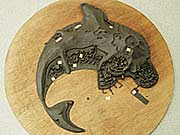

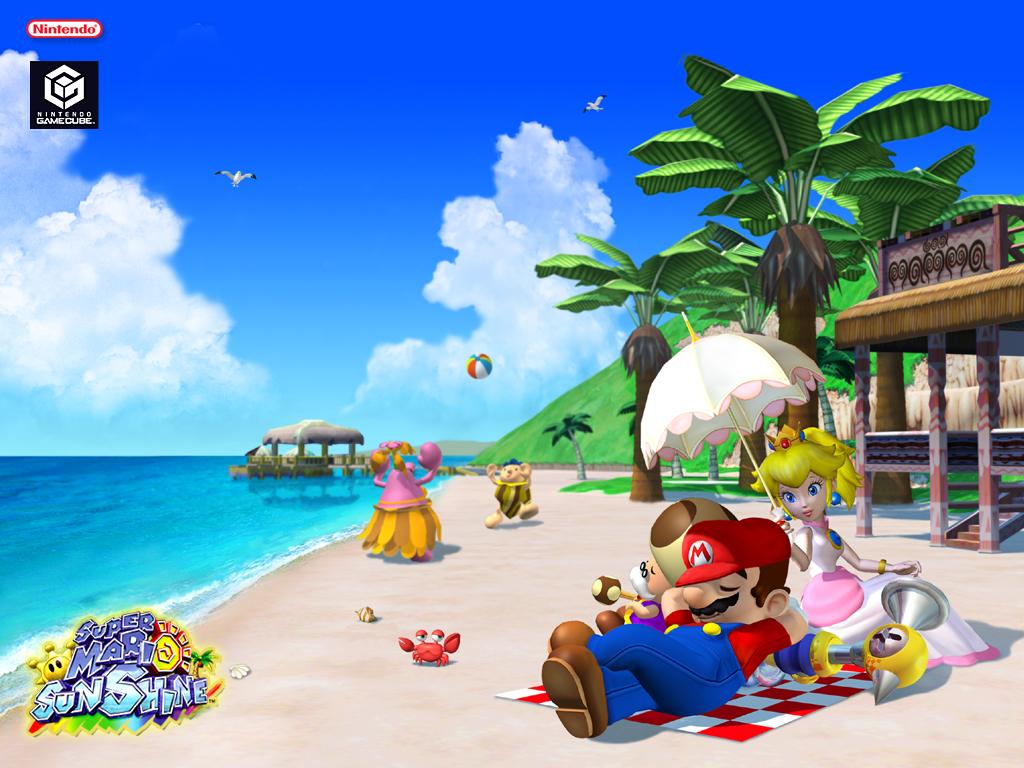

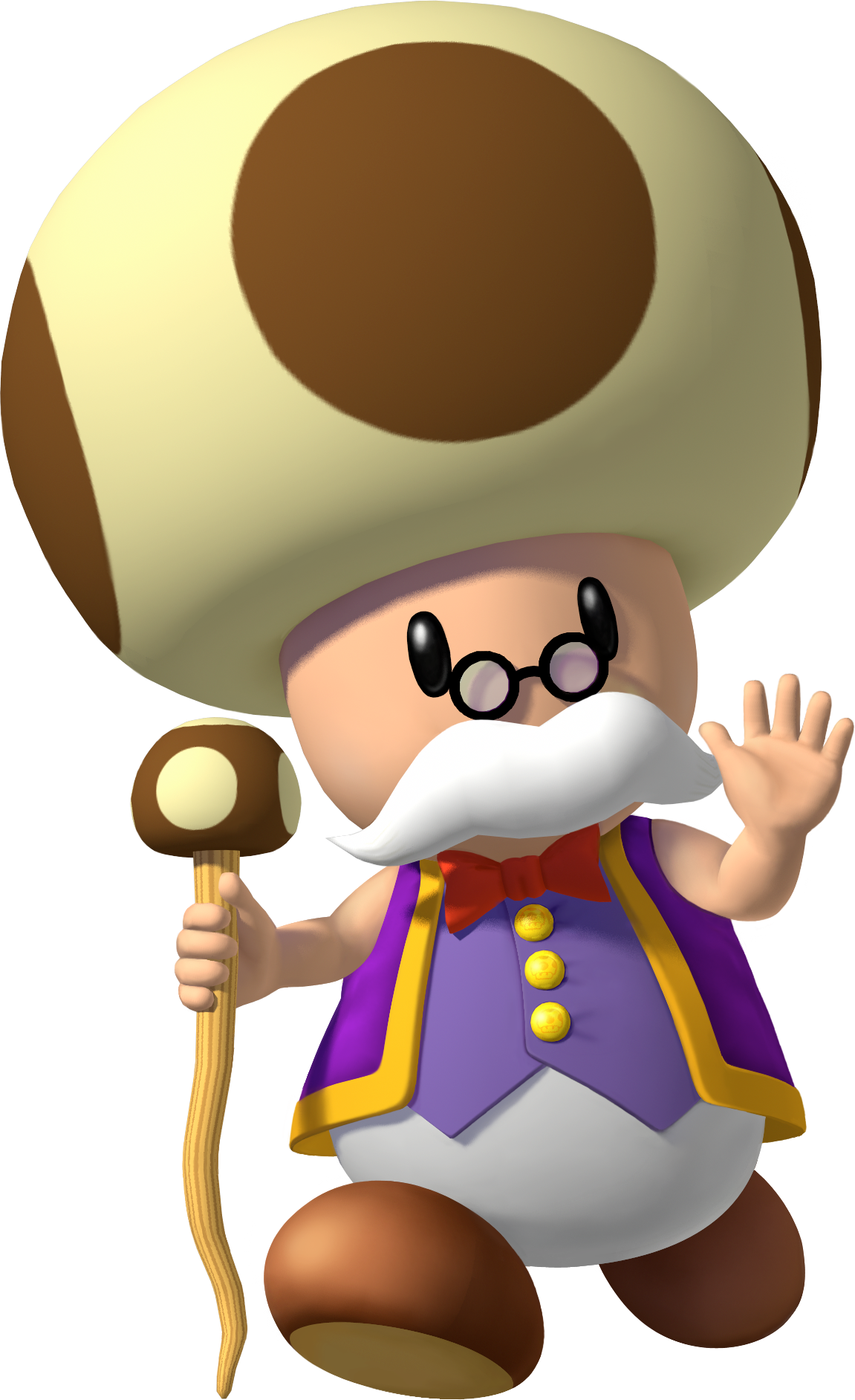
.png)


















.png)



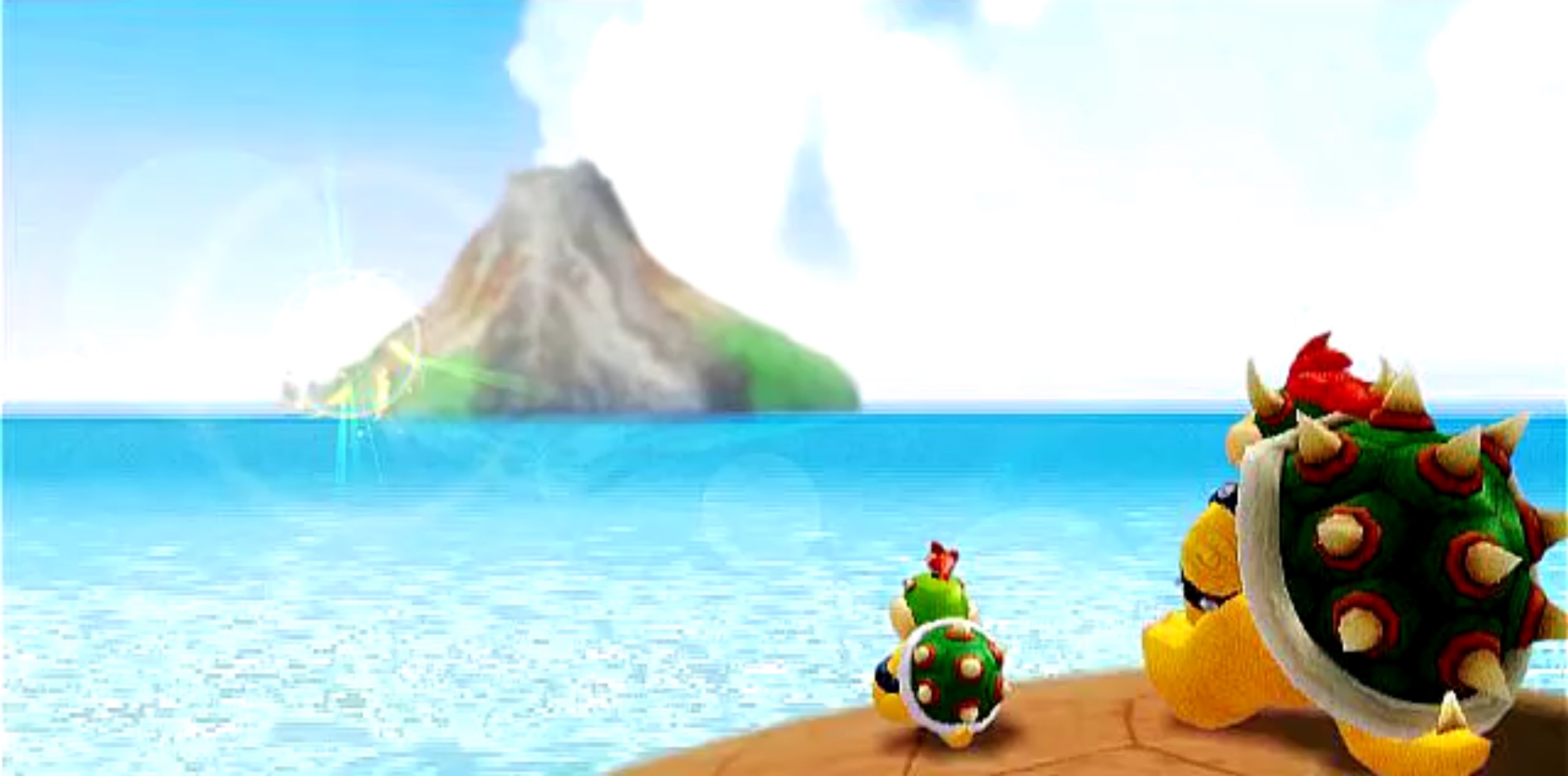

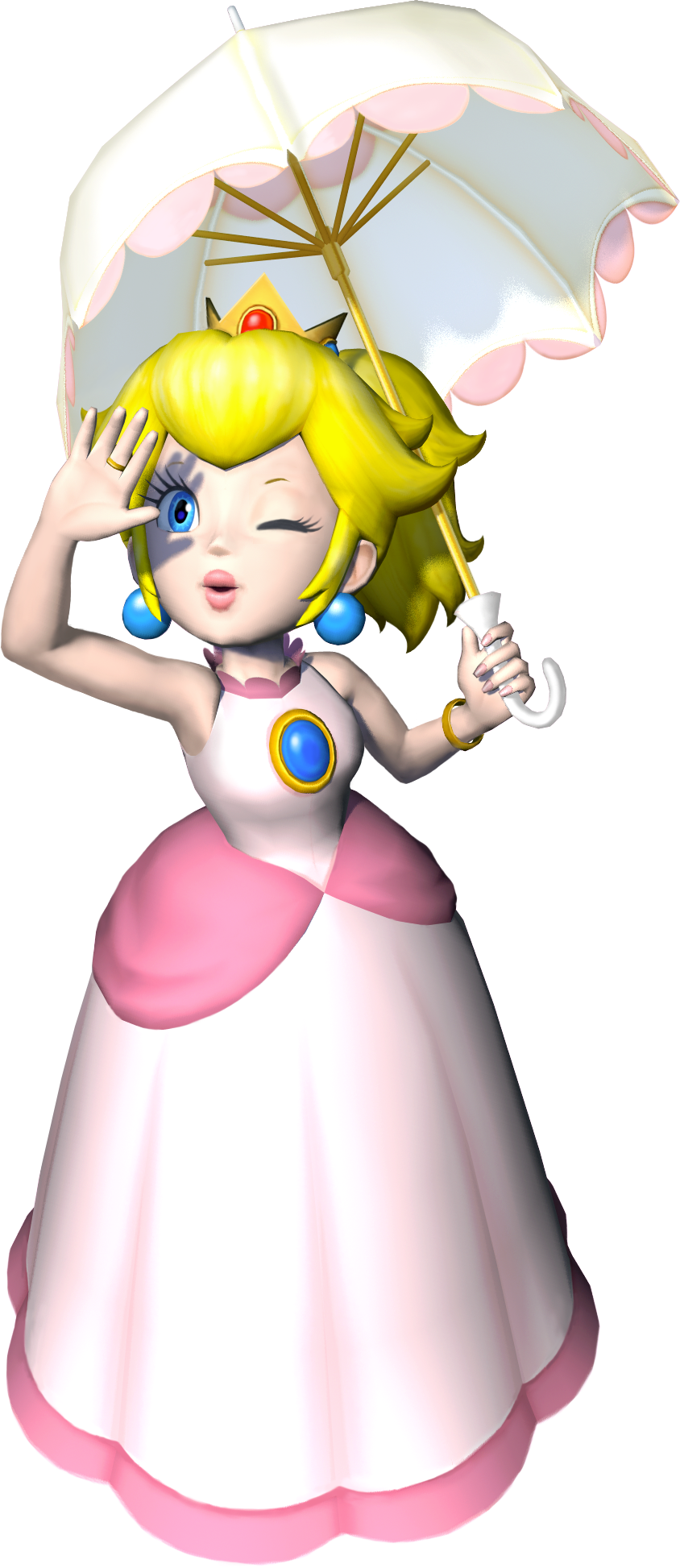

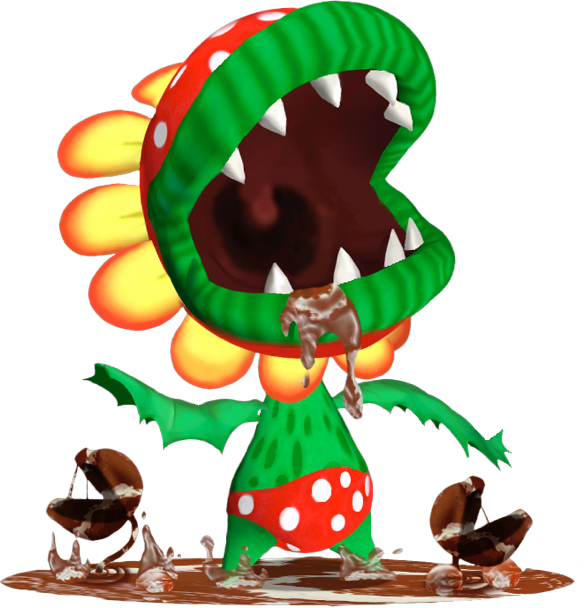



No comments:
Post a Comment